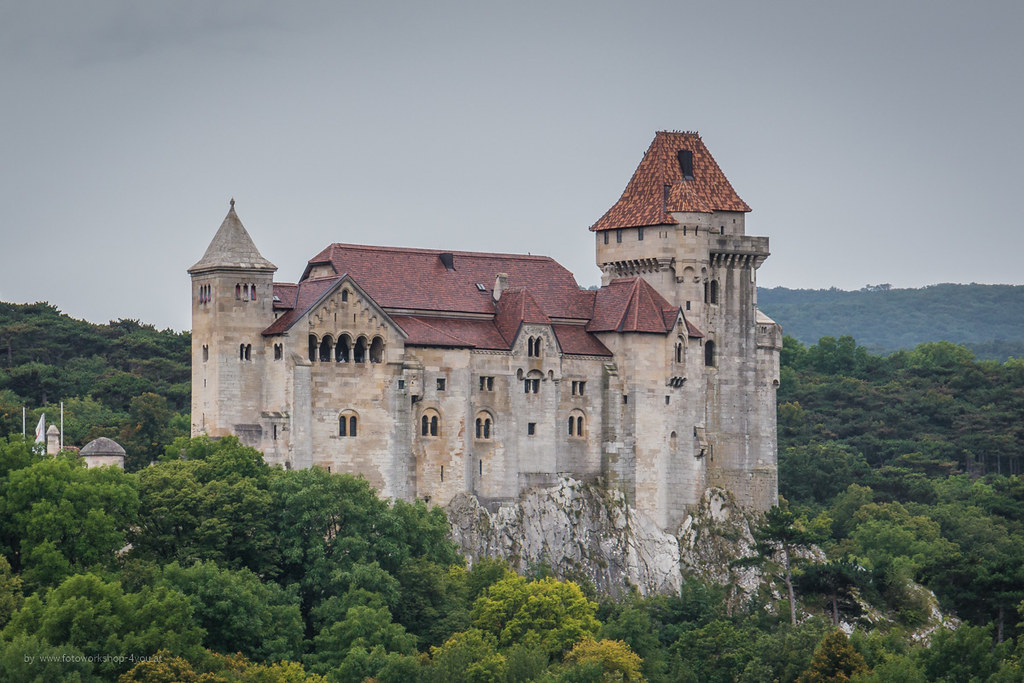Most beautiful medieval castles in Austria
Austria has hundreds of imposing castles, many of them built to an impregnable hilltops. Here is the list of some historic gems, still breathing the power of medieval land lord families.

Hohensalzburg Castle
Hohensalzburg Castle is one of the largest medieval castles in Europe. Construction of the fortress began in 1077 under Archbishop Gebhard von Helfenstein. In the Holy Roman Empire, the archbishops of Salzburg were already powerful political figures and they expanded the castle to protect their interests.
Read more about Hohensalzburg Castle
Hohenwerfen Castle
Hohenwerfen Castle stands high above the Austrian town of Werfen in the Salzach valley. The castle is surrounded by the Berchtesgaden Alps and the adjacent Tennengebirge mountain range.
Read more about Hohenwerfen Castle
Kufstein Fortress
Kufstein fortress is one of the most impressive medieval constructions in Tyrol. It is located on a hill rising above the city of Kufstein. This fortress has already been built very early in order to control the entrance from the Alpine foothills into the Inntal valley. However, it has been mentioned for the first time in 1205 AD, when it was in possession of the bishops of Regensburg.
Read more about Kufstein Fortress
Hochosterwitz Castle
Hochosterwitz Castle is considered to be one of Austria's most impressive medieval castles. The rock castle is one of the state's landmarks and a major tourist attraction. The site was first mentioned in an 860 deed issued by King Louis the German of East Francia, donating several of his properties in the former Principality of Carantania to the Archdiocese of Salzburg.
Read more about Hochosterwitz Castle
Riegersburg Castle
Riegersburg Castle is a medieval castle situated on a dormant volcano above the town of Riegersburg. The castle is owned by the Princely Family of Liechtenstein and contains a museum with changing exhibitions. The castle was built on a hill which had once been an ancient volcano.
Read more about Riegersburg Castle
Aggstein Castle
Burgruine Aggstein is the remnant of a castle on the right bank of the Danube, north of Melk. According to archaeological excavations of the foundations of the castle it has been inferred that the castle was built in the early part of the 12th century.
Read more about Aggstein Castle
Rosenburg Castle
Rosenburg castle is one of Austria's most visited Renaissance castles. It is situated in the middle of a nature reserve which adds to its appeal.
Read more about Rosenburg Castle
Forchtenstein Castle
Forchtenstein Castle first part with its 50-metre high keep was built in the beginning of the 15th century by the Lords of Mattersburg, who later named themselves Lords of Forchtenstein. The castle features a tower, known as the 'Black Tower' although the black rock that originally lined the tower has since been stripped.
Read more about Forchtenstein Castle
Mauterndorf Castle
Burg Mauterndorf is probably built on the site of an old Roman fort that dates to 326 AD or earlier. It protected the Roman mountain road from Teurnia via Radstädter Tauern Pass to Iuvavum (present-day Salzburg) and served as a residence for the Roman administrator in the Noricum province.
Read more about Mauterndorf Castle
Landskron Castle
Landskron is a ruined castle northeast of Villach in the state of Carinthia. The estates around Lake Ossiach were first mentioned in an 878 deed issued by the East Frankish king Carloman of Bavaria, who granted them to the monastery of Altötting he had established shortly before.
Read more about Landskron Castle
Liechtenstein Castle
Liechtenstein Castle is a castle near Maria Enzersdorf in Lower Austria bordering Vienna.
Read more about Liechtenstein Castle
Seebenstein Castle
Seebenstein Castle, just south of Vienna, was built between 1180 and 1230. At one time, it was owned by the Princes of Lichtenstein; today it is privately owned and lived in by a family that opens it to the public on weekends.
Read more about Seebenstein Castle
Clam Castle
Clam castle was built in 1149 by Otto von Machland who owned all of Upper Austria. At that time it was a fortress consisting of two towers over 30 meters high. These two impressive buildings, one round and one rectangular, still exist in the very same shape today. Soon after Otto von Machland died, the castle fell into the hands of robber barons.
Read more about Clam Castle
Moosham Castle
Possibly built on the foundations of a Roman castrum fortress, the Moosham castle was first documented in a 1191 deed. It was seized by the Prince-Archbishops of Salzburg about 1285 and from the 14th century onwards served as the residence of an episcopal burgrave.
Read more about Moosham Castle